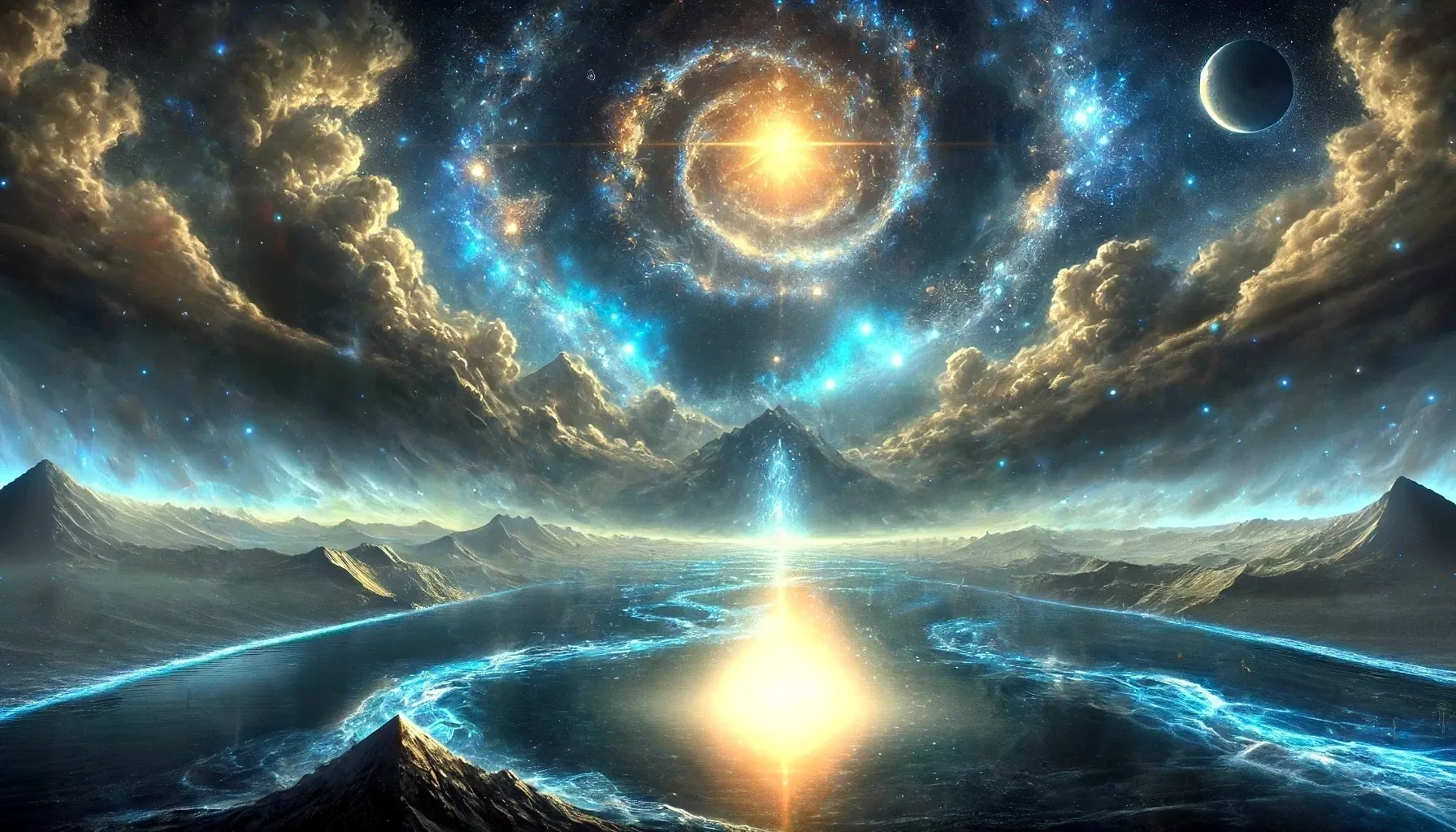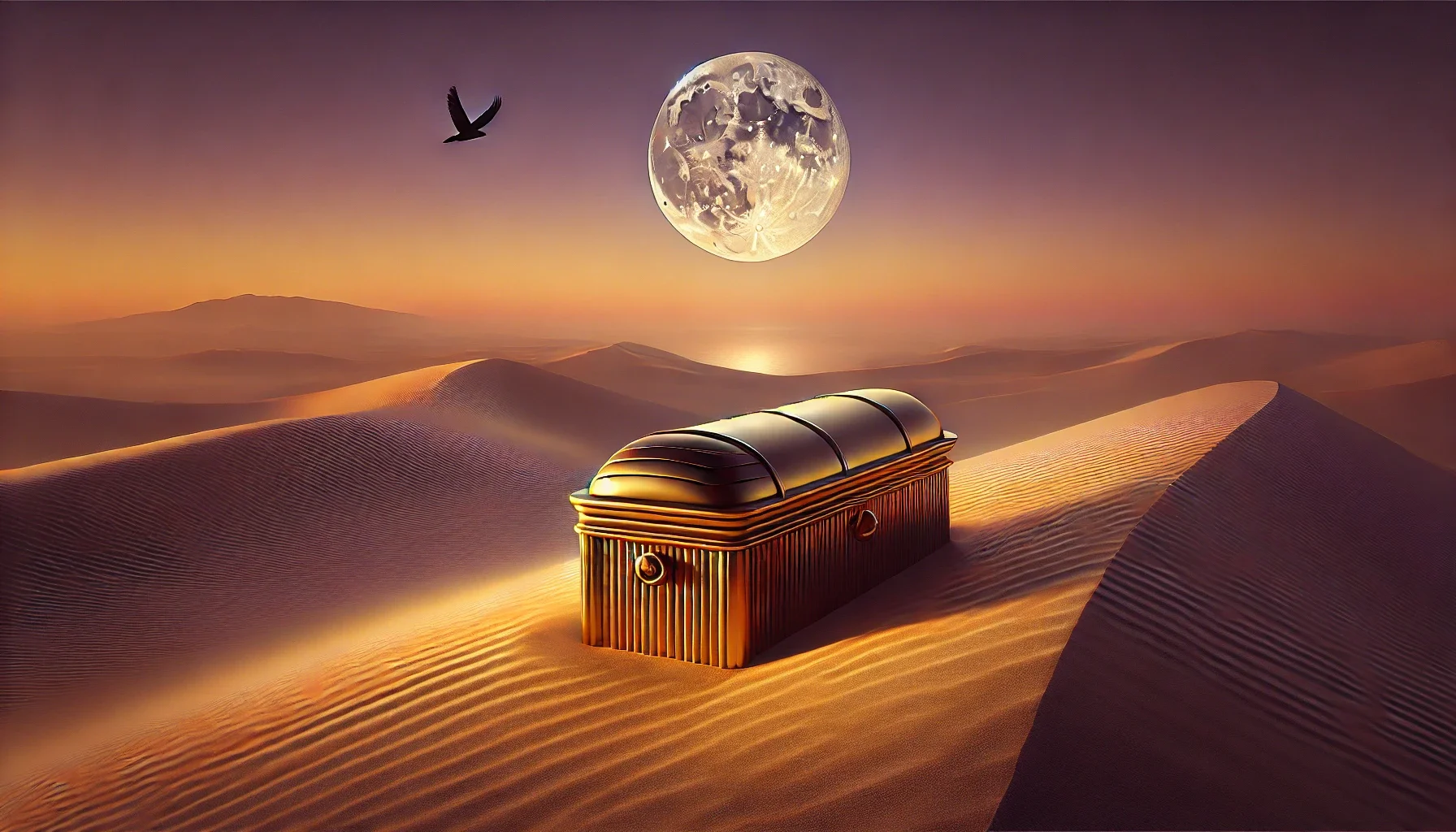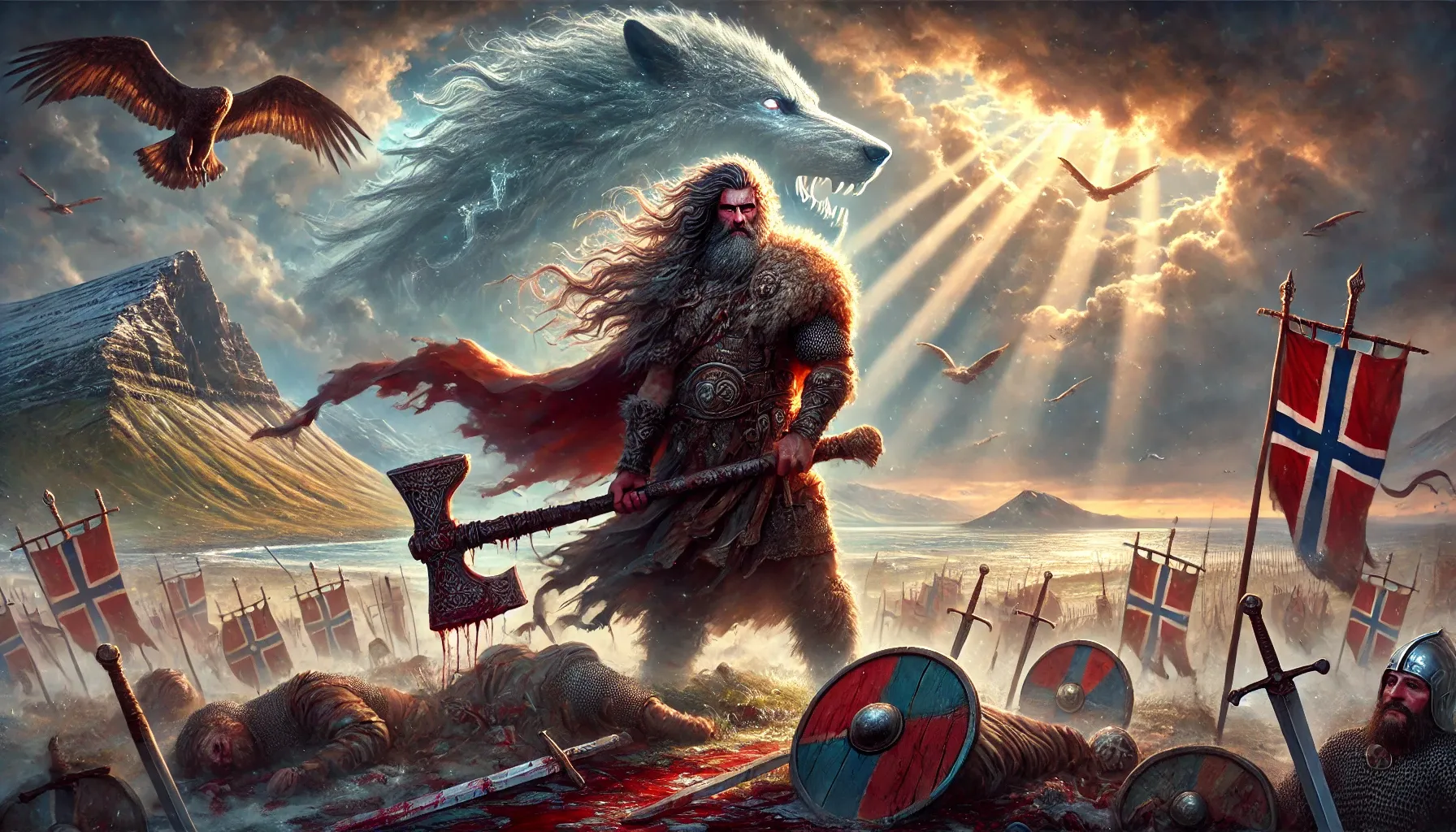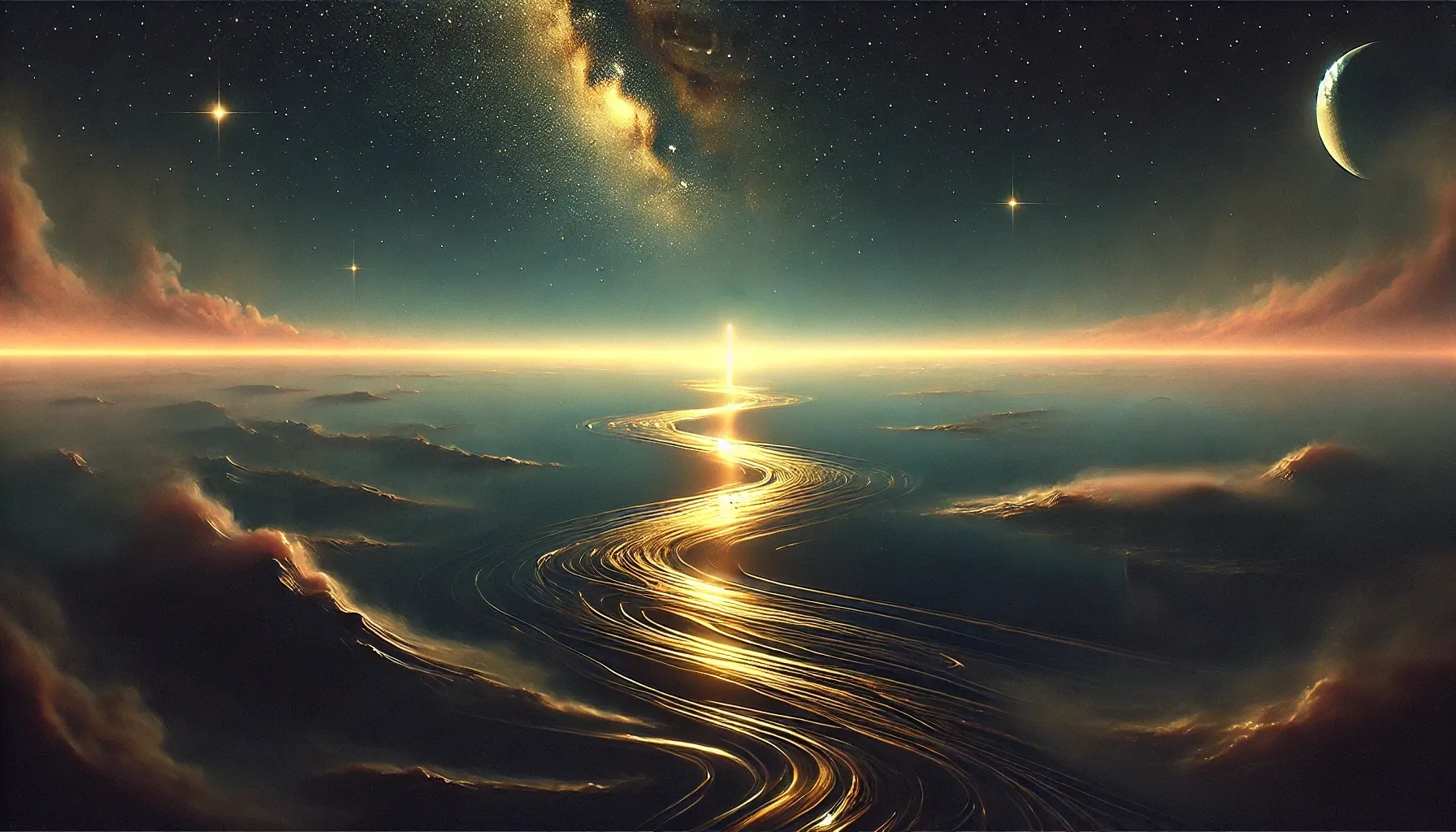The Infinite Void
In the beginning, before the world had form or name, there was only Nun—the primordial waters. Boundless and inert, these waters were neither sea nor sky, neither firmament nor abyss. They were the essence of potential, a deep and endless womb cradling the unborn cosmos. Time itself lay dormant within Nun, unmarked by sun or star. Silence reigned, broken only by the inaudible hum of latent creation.
The Egyptians believed that Nun existed before all things, a realm of chaos but also promise. Within its dark expanse swam the seeds of life, yet they were hidden, enfolded by the formlessness of nonexistence. Nun was both womb and tomb, infinite yet unknowable, its depths holding the secrets of beginnings and endings alike.
The Awakening of Atum
From this fathomless sea, a single stirring began. It was Atum, the self-created god, the lord of completeness. He arose from the waters, neither born nor begotten but willing himself into existence. Atum was both male and female, the totality of life and the paradox of being. His emergence from the waters was not violent but deliberate, as if the universe sighed with relief at its first breath.
Atum stood upon the primeval mound, the benben, which had risen from Nun’s depths. This mound was the first land, a solitary island of stability in the midst of chaos. From this sacred perch, Atum surveyed the unshaped world, and his heart swelled with the desire to create. Yet he was alone, and loneliness weighed upon him like the shadow of Nun.
The Birth of Creation
Determined to bring forth companions, Atum began his work. He drew his own essence from within, a divine act of self-generation. With a great exhalation, he spat forth Shu, the god of air, and Tefnut, the goddess of moisture. Theirs was a birth of paradoxical intimacy and distance—life emerging from one being, yet separate and distinct.
Shu and Tefnut tumbled into the vastness of Nun, their forms luminous against the dark waters. Atum watched as they explored the nascent cosmos, their laughter echoing in the void. They became the first duality, the balance of dryness and wetness, order and disorder. Yet even as Atum delighted in their existence, a deep fear took hold of him. For Nun’s waters were vast and unyielding, and the gods could be lost within them.
The Tears of Reunion
Atum’s fear proved true when Shu and Tefnut did not return. Their absence stretched into endless days, each moment a pang of longing. Atum’s heart, the seat of divine will, ached with the burden of solitude once more. In his grief, he wept, and from his tears fell the first humans. These fragile beings, born of divine sorrow, became the stewards of emotion and memory. Yet even their creation did not fill the void left by his missing children.
At last, Shu and Tefnut returned, their forms shimmering with the essence of Nun. They brought with them the beginnings of structure, the first hints of a world beyond chaos. Their reunion with Atum was both joyous and solemn, for it marked the first triumph over the vastness of the primordial waters. Together, the three gods began the work of shaping the cosmos.
The Weaving of the Sky and Earth
From Shu and Tefnut came Geb, the god of the earth, and Nut, the goddess of the sky. They were born entwined, their love a fusion so profound that it threatened the order Atum sought to build. Shu, with his breath of air, was tasked with separating them. He thrust himself between Geb and Nut, lifting her high above while anchoring Geb below. The act tore the lovers apart, but it also created the space for life to flourish.
Nut arched above, her body studded with stars, while Geb lay below, fertile and green. Between them stretched Shu, an eternal guardian, his arms holding the weight of the heavens. In this separation, the world as we know it began to take form. The interplay of sky, earth, and air birthed the cycles of day and night, the rhythm of seasons, and the pulse of existence.
The Rise of Ma’at
As the cosmos grew, so too did the need for balance. From the union of divine will and creation arose Ma’at, the goddess of truth, justice, and harmony. She was not a being born of chaos but a principle carved from it, a beacon of order in a still-turbulent world. Ma’at became the foundation upon which gods and mortals alike would build their lives.
The Egyptians saw Ma’at as the glue holding the universe together. Without her, the world would slip back into the churning waters of Nun. She stood as the antithesis of chaos, her feather a symbol of lightness and purity. Atum and the other gods revered her, for she was the measure of their success in shaping creation.
The Eternal Return
Yet Nun, the primordial waters, did not vanish. It lingered at the edges of the world, a reminder of what had been and what could be again. The Egyptians believed that Nun was both the beginning and the end, the waters into which the sun god Ra sank each night and from which he rose each morning. In this cycle, they saw the eternal rhythm of creation and dissolution, a dance between chaos and order.
Ra, born of Atum and embodying the light of the world, sailed across the sky each day. At night, he descended into Nun, battling the serpent Apep, the embodiment of chaos. His triumph each dawn was a reaffirmation of the gods’ victory over the waters, a testament to the endurance of Ma’at.
The Waters’ Lament
But Nun was not malevolent. The Egyptians did not see the primordial waters as an enemy to be vanquished but as a vital part of existence. Nun was the source from which all life sprang and to which all life would return. It whispered its truths in the lapping of riverbanks and the crashing of waves, its voice ancient and mournful.
One night, as Ra sailed through Nun, he paused. The waters beneath him shimmered with an unearthly glow, and a single ripple reached up, brushing the edge of his boat. Ra gazed into the depths and saw not chaos but a reflection of his own face, twisted with weariness. The waters seemed to sigh, as if to say, “All things return to me.”
The Last Reflection
And so, the cycle continued. Creation expanded, the gods worked tirelessly to uphold Ma’at, and yet Nun remained. It was the cradle and the grave, the void and the mirror. In the end, it was not chaos but potential—a reminder that within every ending lay the seed of a new beginning.
As Ra rose once more, his light scattering the shadows of night, a single drop of water lingered on the prow of his boat. It caught the sunlight and gleamed like a star, a perfect sphere trembling on the edge. For a moment, it seemed to hold all the possibilities of the cosmos within its fragile form. Then it fell, returning to the waters below.
The ripple it made spread far and wide, touching every corner of existence. In that fleeting moment, the gods, the earth, and the heavens felt the hum of Nun, the primordial waters, reminding them that they were all born of its depths. And though the drop was gone, its essence endured, woven into the fabric of creation itself.
In the silence that followed, the waters grew still once more, cradling the world in their eternal embrace, patient and waiting for the next beginning.



